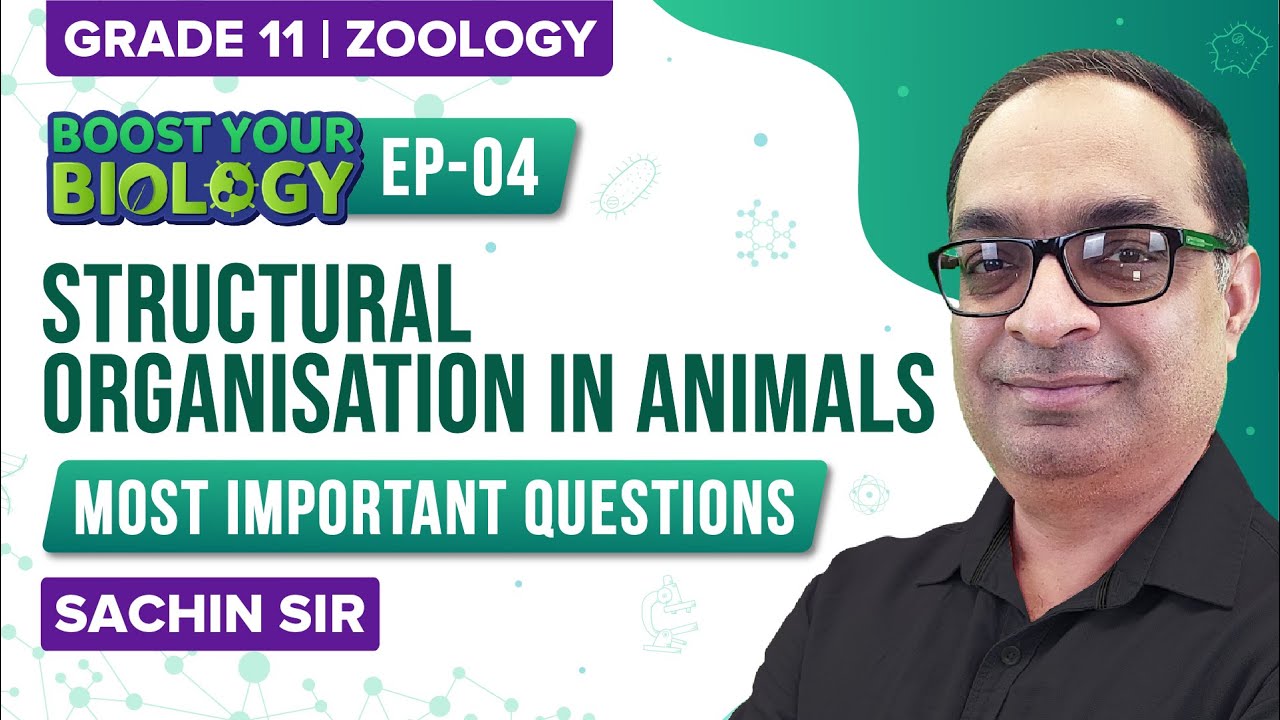Structural organization in animals is the seventh chapter in NEET Biology syllabus. Solve these top 10, important questions in the chapter. Take this quiz and find your score.
Download the Complete Guide to NEET UG Prep
Download Now
Important NEET Questions on Class 11 Chapter 7 Structural Organization In Animals
1. Frog’s heart, when taken out of the body, continues to beat for some time. Select the best option from the following statements
I. Frog does not have any coronary circulation
II. Frog is a poikilothermic
III. Heart is autoexcitable
IV. Heart is “myogenic” in nature (NEET 2017)
A. (I) and (III)
B. Only (III)
C. (I) and (II)
D. (III) and (IV)
2. This feature is not found in Periplaneta americana (NEET- I 2016)
A. indeterminate and radial cleavage during embryonic development
B. Schizocoelom as the body cavity
C. metamerically segmented body
D. exoskeleton composed of N-acetylglucose-amine
3. Sperms in male cockroaches are stored in which part of the reproductive system?
(NEET – II 2016)
A. Vas Deferens
B. Testes
C. Mushroom glands
D. Seminal vesicles
4. Function of gap junction is to (2015)
A. facilitate communication between adjoining cells by connecting cytoplasm for rapid transfer of ions, small molecules and some large molecules
B. stop substance from leaking across a tissue
C. separate two cells from each other
D. performing cementing to keep neighboring cells together
5. Pick the correctly matched pair (2014)
A. Cartilage – loose connective tissue
B. Adipose tissue – dense connective tissue
C. Areolar tissue – loose connective tissue
D. Tendon – specialized connective tissue
6. Compared to those of humans, erythrocytes in frogs are (2012)
A. nucleated and without haemoglobin
B. nucleated and with haemoglobin
C. without nucleus but with haemoglobin
D. very much smaller and fewer
7. One very special feature in the earthworm (Pheretima) is that (2011)
A. the typhlosole greatly increases the effective absorption area of the digested food in the intestine
B. it has a long dorsal tubular heart
C. fertilization of eggs occurs inside the body
D. the S-shaped setae embedded in the integument are the defensive weapons used against the enemies
8. Frogs differ from humans in possessing (Mains 2011)
A. nucleated red blood cells
B. paired cerebral hemispheres
C. hepatic portal system
D. thyroid as well as parathyroid
9. This is a true description of an animal (2008)
A. Earthworm – the alimentary canal consists of a sequence of pharynx, oesophagus, stomach, gizzard, and intestine
B. Rat – left kidney is slightly higher in position than the right one
C. Cockroach – 10 pairs of spiracles (8 pairs on the abdomen and 2 pairs on the thorax)
D. Frog – body divisible into three regions – head, neck, and trunk
10. In which of the following preparations are you likely to come across cell junctions most frequently? (2007)
A. Hyaline cartilage
B. Thrombocytes
C. Ciliated epithelium
D. Tendon
| Question | Answer Key |
| 1 | D |
| 2 | A |
| 3 | D |
| 4 | A |
| 5 | C |
| 6 | B |
| 7 | A |
| 8 | A |
| 9 | C |
| 10 | C |
More here: MCQs on Animal Tissue
These were some questions important in the chapter structural organization in animals for NEET. See more relevant content at BYJU’S.
Recommended Video:
Structural Organisation in Animals | NEET Most Important Questions

Related Links:
| Flashcards Of Biology For NEET Structural Organisation In Animals |
| Important Notes for NEET – Organisms and Population |
| NEET Biology MCQs |
Comments